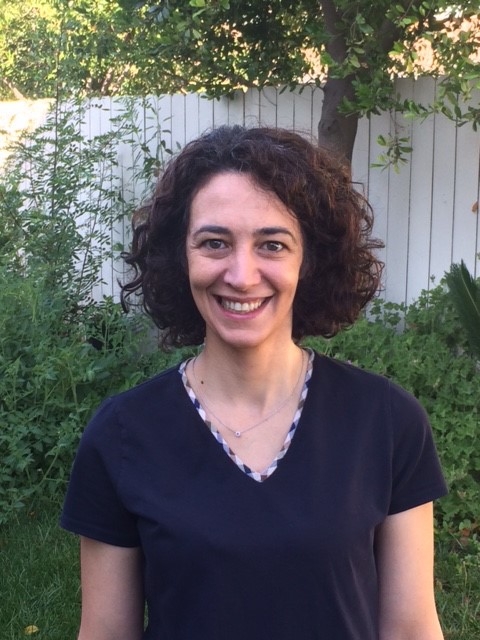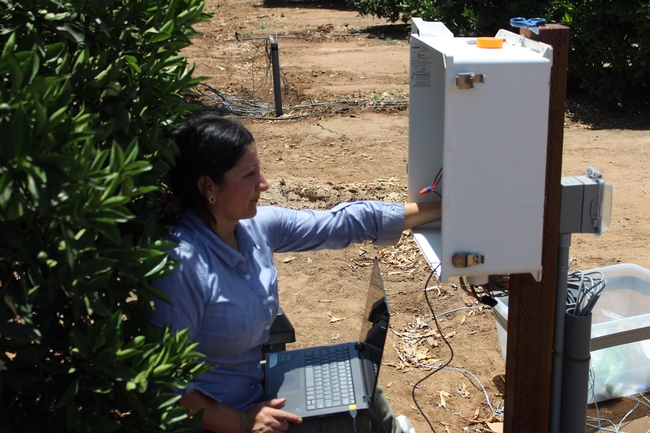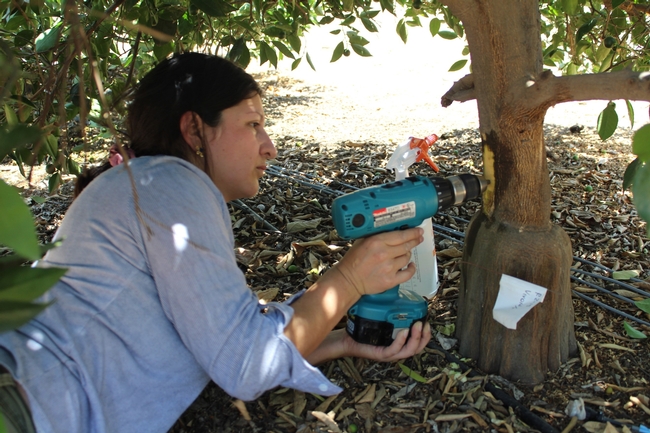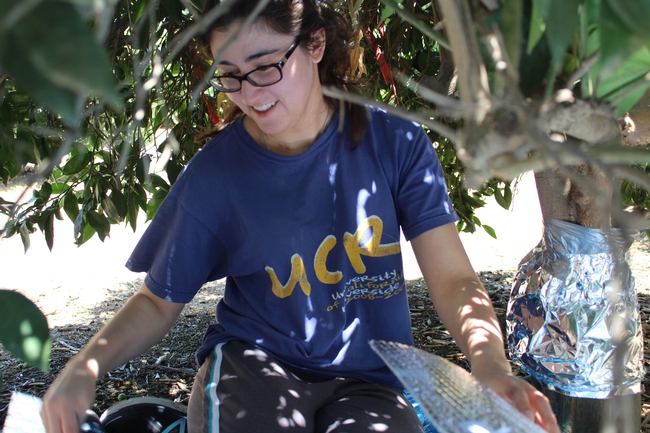
In 1998, as part of a series of preliminary Citrus Research Board (CRB)-supported trials, navel orange trees treated with a dwarfing agent were planted at the Lindcove Research and Extension Research Center (LREC). The dwarfing agent used in these trials, a small RNA molecule named “Transmissible small nuclear Ribonucleic acid” (TsnRNA”) resulted in a dramatic reduction in tree size. Most importantly for citrus growers, fruit yield per canopy volume and fruit quality (size, color, sugar/acid ratio) of these TsnRNA-treated trees was not affected while double number of trees could be planted in the same land surface (up to 400 trees per acre).
Almost 20 years after planting, the threat of HLB brought about a renewed interest in this potential technology. When growers saw the dramatic reduction in size of these trees during a visit to LREC in November 2014, they expressed a strong desire to explore this technology.
Production of commercial dwarfed trees is key to the successful development of high-density plantings (potentially under protected screens – CUPS), which will be critical to meet future citrus production challenges. To assess the potential savings offered by the employment of this application, UC Riverside scientists are investigating nitrogen fertilizer requirements, nutrient uptake efficiency, water-use efficiency, pesticide application efficiency and savings in labor time for several horticultural operations such as hedging, spraying, fruit harvesting, and tree inspections.
Last winter, fruit nutrient analysis was performed so that fertilization efficiency can be determined. This spring, LREC staff brought several electrical outlets to the field so that equipment to monitor water uptake could be set up. UC Riverside scientists installed sap-flow sensors into the trunks of the dwarfed trees and connected them to dataloggers so that data on water use-efficiency can be calculated.
This CRB-supported project has also fostered the collaboration between the Microbiology and Plant Pathology Department and the Botany and Plant Sciences Department at UC Riverside. Dr. G. Vidalakis, Dr. I. Lavagi, and Dr. R. Christiano work with Dr. L. Santiago and Dr. C. Lovatt to determine the potential of this technology for the California citrus industry.


